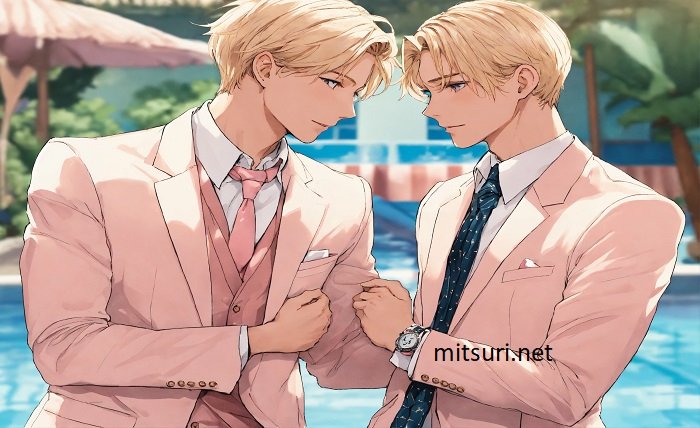Introduction
Manga is a popular and well-respected kind of Japanese comic art that has won over millions of fans worldwide. Although most people are familiar with popular genres like shojo, which is aimed towards young girls, and shonen, which is aimed at young boys, there is a wide variety of subgenres that serve more niche audiences. One such subgenre is gay manga, a lively and diverse field that presents distinctive viewpoints and tales focusing on relationships between men. We will go into the world of homosexual manga in this blog article, looking at its background, cultural relevance, main themes, and important creators. We hope to raise awareness of the value of diversity and representation in manga through this voyage.
The Origins of Gay Manga
The genre known as gay manga, or “bara” as it has come to be called, started to take shape in the 1970s. The emergence of independent manga magazines, or “doujinshi,” at this time allowed authors to explore subjects and storylines without being constrained by conventional conventions. Early painters with an emphasis on adult themes and realism, such Gengoroh Tagame and Jiraiya, started to produce paintings that portrayed male-male relationships. While “yaoi” is a genre that also examines male-male relationships, it is predominantly created by and for women. In contrast, gay manga frequently portrayed more accurate and diverse portraits of homosexual men.
Understanding the Difference Between Yaoi and Gay Manga
It’s critical to distinguish between yaoi and homosexual manga since they have distinct target audiences and frequently have different themes and styles. Yaoi, commonly referred to as “Boys’ Love” (BL), is a romantic comedy that targets a female audience by featuring idealized and frequently amorous relationships between male characters. Dramatic romance and deep emotional relationships are common themes in these works. On the other hand, gay manga is written by gay men for a male readership and has more of a focus on realism, sensuality, and gay men’s day-to-day experiences. awareness the cultural and social circumstances of various genres requires an awareness of this divide.
Key Themes and Tropes in Gay Manga
The diversity of experiences within the LGBT community is reflected in the wide range of subjects and tropes covered by gay manga. Typical themes consist of:
Coming Out: A lot of LGBT manga examines the struggles and victories associated with coming out, providing readers who have experienced similar things with stories they can relate to.
Identity and Self-Acceptance: Characters frequently struggle to reconcile their inner acceptance with society expectations around their sexual identities.
Love & Relationships: Gay manga explores the complexities of love between men via fervent romances and intricate partnerships.
Fantasy and Sci-Fi Elements: To produce original and captivating stories, several gay comics combine elements of science fiction, fantasy, and supernatural themes.
Everyday Life: Slice-of-life tales offer an insight into homosexual men’s lives on a daily basis, showcasing both typical and unique occurrences.
The Impact of Gay Manga on LGBTQ+ Representation
The advancement of LGBTQ+ representation in media has been greatly aided by gay manga. These works give readers who might not see themselves portrayed in mainstream media recognition and validation by presenting honest and diverse portrayals of homosexual men. Furthermore, LGBT manga has connected fans and authors worldwide by fostering a sense of community and solidarity. The general public’s growing acceptance and comprehension of LGBTQ+ problems has also been facilitated by this increased visibility.
The Global Reach of Gay Manga
Despite having its roots in Japan, gay manga has had a significant international impact. These works have been loved by fans worldwide, resulting in multilingual translations and adaptations. Gay manga has become more widely shared thanks to online platforms and fan networks, which has made it easier for readers from many cultural backgrounds to find and appreciate these stories. Because of their widespread reach, artists are able to take inspiration from a variety of sources and incorporate elements from other traditions into their works, resulting in cross-cultural influences.
The Future of Gay Manga
With more writers experimenting with new themes and expanding the genre’s bounds, the future of gay manga appears bright. There is a growing need for diverse and inclusive media as public perceptions of LGBTQ+ issues continue to change. homosexual manga’s growing cast of stories and characters reflects this change, giving readers access to more complex and nuanced representations of homosexual men. Furthermore, homosexual manga continues to be a relevant and dynamic form of expression because of the increased options that technology improvements and internet platforms give authors to reach viewers around the world.
Conclusion
Gay manga is a rich and diverse genre that offers unique insights into the lives and experiences of gay men. From its origins in the 1970s to its global reach today, gay manga has played a vital role in advancing LGBTQ+ representation and fostering a sense of community. By exploring themes of identity, love, and acceptance, these works provide valuable visibility and validation to readers worldwide. As the genre continues to evolve, it promises to offer even more varied and inclusive stories, reflecting the full spectrum of LGBTQ+ experiences. Whether you’re a longtime fan or a newcomer, there is a wealth of gay manga waiting to be discovered and enjoyed.
FAQ
What is gay manga?
Japanese comics that concentrate on male-to-male relationships are known as gay manga. Gay manga, which is written by gay men for a male audience as opposed to yaoi, which is intended for a female audience, frequently depicts homosexual men in a more realistic and varied light.
How does gay manga differ from yaoi?
Although male-male relationships are portrayed in both genres, yaoi, often known as Boys’ Love, is usually written by and for women and frequently features idealized and romanticized relationships. In contrast, gay manga is written by gay men for a male readership and places more of a focus on realism, sexuality, and commonplace situations.


